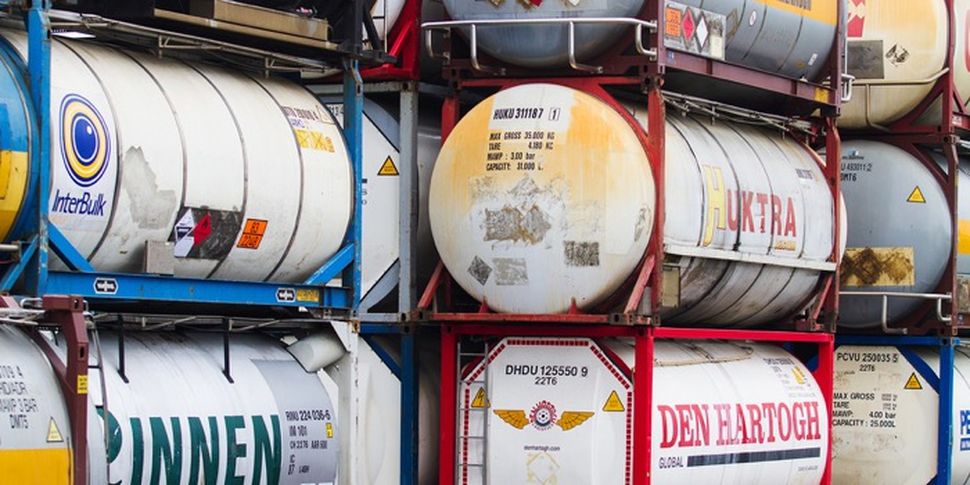Liquid cargo transportation: rules and nuances

Manufacturers, processors, consumers often have to order the transportation of liquid cargo. This category includes all substances, substances that are in a liquid state of aggregation. It can be oil and oil products (fuel oil, gasoline, diesel fuel), liquefied gas, various types of oils (vegetable, mineral, synthetic), acids and their solutions, propane, butane, etc.
Carriers distinguish three main groups of liquid cargo:
- oil and products of its distillation;
- chemical components and food semi-finished products (products);
- liquefied gas.
To date, there are no general rules governing the transportation of bulk cargo. The main problem is that substances need to be transported at different temperatures, humidity, etc.
What should be considered when transporting bulk cargo?
When drawing up a plan for loading and subsequent transportation, it is important to pay attention to the following points:
- Density of the substance, possible changes in air temperature along the way. If a liquid medium is heated, its density will increase. On cooling, the density decreases accordingly. If the tank is filled completely, then, for example, in equatorial latitudes, the likelihood of heating the contents and increasing its volume increases. If the container is tightly sealed at the same time, it may simply burst from the inside.
- Viscosity. This parameter must be taken into account when carrying out loading and unloading operations. In some situations, in order to reduce the viscosity, the substance has to be heated or use special pumps.
- Pour point. Bitumen, asphalt mixtures harden quickly enough at a standard street temperature. It is difficult to unload them in this state. To optimize loading and unloading operations, many substances have to be stored and transported in containers with built-in heating elements for heating.
- Evaporation. Water, products of distillation of oil under certain conditions evaporate and pass into a different state of aggregation. Costs can be minimized if optimal transportation conditions are calculated and created in advance. It is important to pay attention to the ambient temperature, mirror area, medium pressure, etc.
- Flash point. A significant part of liquid bulk cargo is explosive. Their vapors mix with air and at a certain temperature can be ignited by a single spark.
- Ignition temperature. The bulk cargo or its vapors, upon reaching a certain even minimum temperature, may flare up. And it doesn't even require the presence of flames or sparks.
- Explosive limit. This parameter determines at what minimum percentage of vapors of the transported medium in the air an explosion can occur, provided that there is an open flame nearby or a spark breaks out. Sometimes even the presence of a heated or hot steel object is sufficient.
- Electrolysis. This criterion characterizes the ability of a liquid medium to accumulate static electricity charges. The more there are in the tank, the higher the likelihood of fire or explosion.
- Chemical neutrality in relation to the container material. Some liquid compositions, if they do not directly destroy the tank body, then contribute to the appearance and development of corrosive processes. This is typical for acids and alkalis both in pure form and in solution. If they are to be transported, you need to carefully choose the container.
- Toxicity. Many fluids give off vapors that are extremely hazardous to nearby people.
Containers for transportation of different types of liquid cargo
For transportation of oil, oil products, oils, chemical components and gas in a liquefied state, use:
How to transport liquid cargo by road
If oil, petroleum products or liquefied gas is to be delivered by a door-to-door system, no overloading or overflow is planned, truck tanks are often chosen: trailers and semi-trailers. They are used to deliver milk from farms to processing plants, gasoline and liquefied gas to gas stations.
Motor transport is chosen for the transportation of liquid cargo within one settlement or region. Transportation over long distances is unprofitable for economic reasons.
How to transport liquid cargo by rail
For the delivery of liquid substances by rail are intended:
How to transport liquid cargo by sea or river transport
It is possible to deliver a consignment of oil from one continent to another or remove it from a drilling platform only with the help of special ships. Tankers are also used within the same continent, for example, for the delivery of bulk cargo along rivers or canals.
It is not economically feasible to use sea or river vessels for transportation over short distances. But for the delivery of liquid substances across the seas and oceans are intended:
- Tankers. Almost the entire space of the ship is allocated for the reservoir. For ease of loading and increased safety, it is divided into separate sections. In this case, cargoes with different physical and chemical characteristics can be transported on one ship without fear of mixing.
- Tank containers. They are designed for the carriage of liquid cargo on standard bulk carriers.
Rail transport is considered the safest. But the waterway is the only way to transport goods between continents or to regions where there are rivers and sea harbors, but there is no road or railroad.


